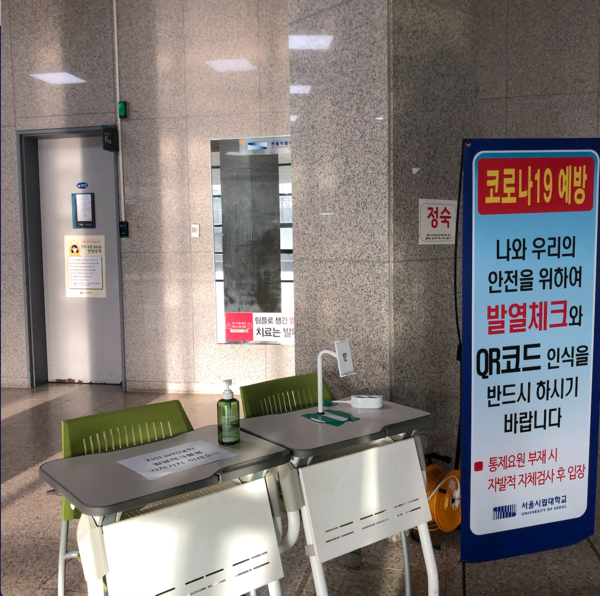Loosened Visitor Registration Management
After the COVID-19 outbreak, University of Seoul (UOS) announced that all buildings at UOS should require visitor registration at the entrance to record all visitors. This process was forced by the government in all multi-use facilities, including universities, to track COVID-19 infection routes. However, it seems that there are many loopholes in applying this process to UOS.
Earlier this month, The UOS Times found that after 6 p.m., there was no system to track visitors to the building. The tables for recording the registration list and checking QR code-based registration were empty after this time, and no one was guarding the buildings. As most school administrators, including employees and students working for scholarships, leave work at 6 p.m., the system was not managed after that time. Thus, even if an infection occurs due to an infected person’s entry after 6 p.m., it would be difficult to pinpoint that person’s precise track.
In some cases, even before 6 p.m., visitor registration was not in place. The desks at the entrance of the building were left unattended, with no administrators and only the registration list. This problem is serious because there are currently face-to-face classes being held in some of the buildings. Furthermore, many people enter the building for reasons such as visiting the department office, even if they do not have face-to-face classes.

Access can be managed to some extent because students have to tag their student ID cards before entering the building. However, this is only applicable when a building is locked. Many entrances at UOS are left open, so anyone can enter the building freely without scanning their ID card. Moreover, if several people enter the building simultaneously, in most cases, only one person scans their ID card, and the rest follow through the now-open door. As a result, none of the other individuals are identified.

Under these circumstances in which the quarantine situation left to the visitors to manage, UOS has become a time bomb that may explode at any time. Even if UOS’s measures are nearly identical to those selected as a model for universities for quarantine, it is unfortunate that there are such loopholes. Series of group infections are emerging continuously in university districts. Places such as bars and karaoke have a relatively high risk of contamination, but buildings on campus must be more thoroughly managed for quarantine.

